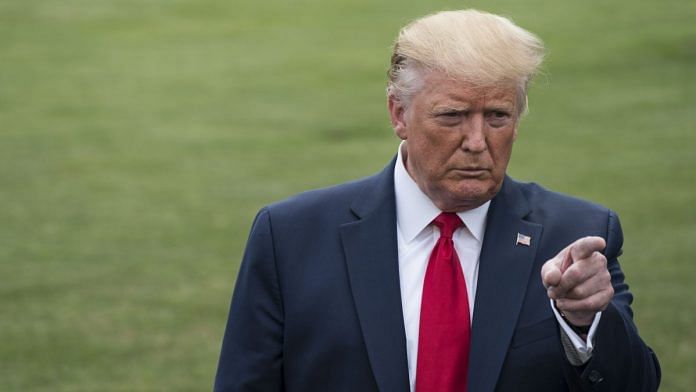As the global economy shows signs of stuttering, the race is on to find the right policy response. In Europe, many central bankers are asking politicians in countries such as Germany to unleash a fiscal stimulus to complement their recent monetary push. In the U.S., President Donald Trump is lambasting the Federal Reserve for failing to cut rates fast enough, letting the dollar appreciate excessively.
But any such antidote would only be a second best response to what is really driving the global slowdown. The world economy is suffering because of trade tensions and the pernicious effect that uncertainty is having on the spending decisions of consumers and companies. Until this is resolved, any other policy moves will only have a mitigating effect on growth.
The scale of the challenge facing the world economy is clear from the latest batch of forecasts from the World Trade Organization published last week. The WTO now predicts that global merchandise trade volumes will rise by only 1.2% in 2019, which is less than half than the 2.6% growth forecast in April. Trade growth is expected to recover next year to 2.7%, but much depends on how trade tensions pan out. In the past two years, the same measure has grown at an average yearly rate of 3.8%.
There is strong evidence that robust trade growth leads to fast economic growth. In a classic study, economists Jeffrey Frankel and David Romer have found that a country’s distance from other countries is a powerful predictor of economic growth, after accounting for other characteristics. The authors note that such geographic factors are not a consequence of income or government policy, but have an important role in determining how much a country trades. Hence they conclude that trade must have a significant effect on growth, specifically by spurring the accumulation of physical and human capital and by allowing companies to enjoy economies of scale.
Other studies have also shown that episodes of trade liberalization have pushed companies to become more productive. Another set of economists, Nicholas Bloom, Mirko Draca and John Van Reenen, wrote in a paper that the increased influx of Chinese imports into Europe following Beijing’s entry into the WTO has sparked greater innovation in Europe, underlining to the positive effect of competition from abroad.
It is no surprise then that the deleterious impact of the trade conflict between the U.S., China and other countries is becoming progressively clearer. Last week, a number of indicators in the manufacturing sector – which is most exposed to external demand – showed pronounced weakness across the global economy. In the U.S., the Institute for Supply Management’s factory index fell to 47.8 in September, the lowest since June 2009, while the measure of export orders fell to 41, the lowest since March 2009. The IHS Markit’s index for manufacturing in the euro area touched 45.7 last month, the lowest level since October 2012, at the height of the bloc’s sovereign debt crisis. The drop was particularly sharp in Germany, which saw the measure fall to 41.7, the lowest reading since 2009.
Moreover, the impact risks being long lasting in the absence of a truce. In her maiden speech as managing director of the International Monetary Fund, Kristalina Georgieva said that the cumulative effects of trade conflicts — including the impact on confidence and market reactions — could mean a loss of around $700 billion, or about 0.8% of global gross domestic product, by 2020. “This is approximately the size of Switzerland’s entire economy,” Georgieva said.
There is little doubt that other policy areas can contribute to supporting the world economy. In particular, there is ample room for some European countries such as Germany to respond to this external shock by boosting domestic demand. This would also help to re-orient its economy away from exports, which are proving a double-edged sword after years of boom. In the U.S., the Federal Reserve will want to look at what is going on beyond manufacturing before deciding whether to add to rate cuts in the second half of this year.
But even if policy makers pulled all the other right levers, uncertainty will endure so long as the U.S. administration does not pull back from protectionism. The key questions for the world economy remain whether Trump will finally decide to change course and, if he doesn’t, whether any new U.S. president would. You don’t realize just how good the gains from globalization are until you’ve lost them. – Bloomberg
Also read: US-China relationship is quickly deteriorating by the day







Astrologically speaking , 40 to 50 percent countries can expect winds of change for better , from nominal to average potency , in economic sector also during second half of coming year 2020. Much would depend on how they are placed at present and what is the level of their endeavor to come out.